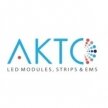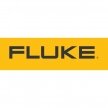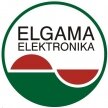Main Functions:
Current Activation: The starter ensures proper current supply to the lamp during the initial activation stage.
Charging Regulation: It controls the current and voltage levels needed to ignite the lamp’s fluorescent tube.
Lamp Protection: The starter protects the lamp from sudden voltage spikes, thereby extending the lamp's lifespan.
Operating Principle: The starter's operation is based on a simple electromagnetic or electronic mechanism:
Initial Stage: When the fluorescent lamp is turned on, electric current flows through the starter, creating a temporary electric arc.
Lamp Heating: The starter sends current through the lamp electrodes, generating the heat necessary for gas ionization inside the lamp.
Current Interruption: Once sufficient voltage is reached, the starter opens the current circuit, and the current continues to flow through the ignited lamp’s fluorescent tube.
Stabilization: After this process, the starter remains inactive until the lamp is turned off and on again.
Types of Starters:
Electromagnetic Starters: Traditional starters with a simple metal switch that works with a magnetic ballast.
Electronic Starters: Use electronic circuits that ignite the fluorescent lamp faster and more efficiently, reduce flicker effect, and extend lamp life.
Characteristics:
Voltage: Starters typically operate at 220–240 V, but there are models for other voltages as well.
Ignition Time: Ranges from a few seconds to a few moments, depending on the type of starter (electromagnetic or electronic).
Durability: The lifespan of starters is generally related to the lamp's lifespan. Electronic starters have a longer lifespan as they manage the electric current more efficiently.
Composition: Starters usually consist of a bimetallic switch (electromagnetic) or semiconductors (electronic) and can be used in various lamp power classes (from 4W to 80W).
Advantages:
Efficiency: Starters ensure that the lamp turns on smoothly and economically without unnecessary energy loss.
Longevity: They contribute to a longer lamp lifespan by reducing electrode wear during ignition.
Reduced Flicker: Electronic starters help reduce flicker, which is common with traditional electromagnetic starters.
Conclusion: Starters are an essential component for fluorescent lamps, ensuring proper lamp ignition and efficient operation. Their operating principle is based on the regulation of a temporary current flow, allowing lamps to turn on and operate stably.




























